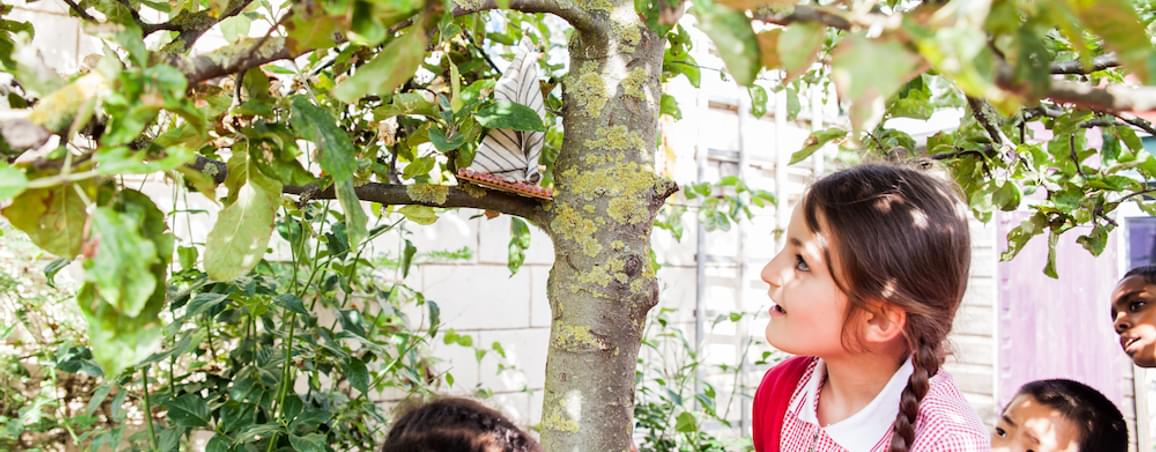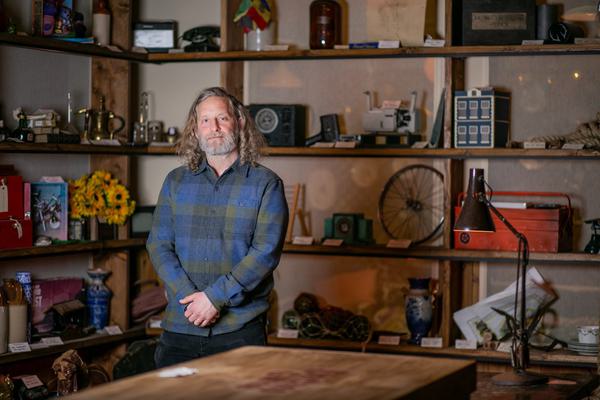How to Create an Immersive Learning Project
Posted June 23rd 2023News Story

In our first blog, we considered what immersive learning is. We discussed the pedagogical power of using immersive theatre techniques in educational settings and how we’re measuring its impact on learners through longitudinal studies. For this next blog, we explore the tools you need to put an immersive curriculum into practice. At the end of the blog, you will find a downloadable resource that you can use to plan an immersive project, so keep reading for that!
We often hear teachers raise concerns over introducing an immersive element to their lessons or school environment. There are understandable preconceptions that it will be costly and time-consuming. However, with some careful planning from the outset, the end result can help bring aspects of their curriculum to light in new, engaging ways for pupils, whilst staying within budget and time constraints. As they embed in the school, immersive projects can also evolve, igniting pupil imaginations year after year.
We’ll be covering these concerns below, looking at how an immersive element can be introduced into schools without leaving too much work to teachers, or over-promising the scope or scale of the project. We’ve also shared one of our exercises at the end of this blog, so you can start thinking about inputting immersive education into your own school or classroom.
As one of eight schools taking part in our Immersive Learning Journeys programme, Wyborne Primary School has received multiple trips from our projects, starting in 2019 when 400 pupils experienced The Lost Lending Library.
When asked by TES if schools should consider immersive experiences as a way to boost literacy, Wyborne headteacher James Searjeant said:
“Definitely, I’ve never seen pupils engage that much of such a buzz of excitement around the school.”
Children, teachers, parents and governors were all captivated by it, Searjeant adds, no matter what age they were, or how interested they had previously been in literacy.
Since then, Wyborne staff have continued to incorporate immersive elements in their teaching. After working with an immersive curriculum for almost three years, Searjeant spoke to us about the key tools each school needs to get started with immersive learning. If you’re keen to start implementing immersive learning in your school, have a look at the kit below and consider which ones you can tick off immediately, and which ones may take a little longer to identify or establish. Let’s dig in…
What’s in the toolkit?
Space
- This could be something as big as a hall or as small as a shelf. Many schools may have a disused classroom, supply cupboard or neglected outbuilding. Can you think of anywhere on your school premises that everyone else has forgotten about?
Permission from leaders to enhance curriculum time, take risks and experiment
- Introducing immersive elements into a busy schedule may feel daunting with regards to time and workload, but there’s no need to start with a huge project. What is vital is that leadership teams acknowledge and appreciate what you’re undertaking, to ensure you feel supported in committing time and energy to developing ideas.
Enthusiastic and informed staff, support staff, parents and carers
- Similarly, sharing that enthusiasm across the school’s community will only help to encourage the immersive elements. James mentioned that parents, carers and grandparents can be invited for a tour to see the space or project and share in the pupils’ delight.
Creative and collaborative time
- Teaching staff need allocated time to come up with an idea that will create awe and wonder, and how to make cross-curricular links with it. This could be in dedicated staff meetings or planning sessions. See our exercise below for inspiration of how to shape an initial discussion.
- “Immersive learning is a really creative approach to pedagogy. For me, it’s about approaching our day to day teaching, learning and curriculum in new, engaging and exciting ways. It’s about adding layers of meaning to what children are doing and giving real purpose to what we do at school and what the children take from us.”– Ben Jones, a member of our Immersive Learning Collective, speaking about the immersive learning approach he uses as a teacher at Mayflower Primary School.
Ensuring the experience is representative of the communities the schools serves
- Are there stories or buildings in the local community with a history you can delve into? What about lesser-known historical figures or groups of people from the same neighbourhood, whose stories are yet to be widely told?
Connective thinking to use immersive learning to enhance curriculum plans
- Immersive learning needn’t be contradictory to more traditional modes of education. From oral storytelling and drama through to art and science, there are endless options for covering set topics.
- Instead of feeling the pressure to dream up an immersive idea that also needs to link back to lesson plans, one route is to use the curriculum for inspiration. Think of themes or topics that might be relevant across multiple subjects and/or across year groups.
- Writing in Education Today magazine, our Artistic Director Peter Higgin outlined another simple way of approaching idea generation for immersive learning: “We help teachers to build their own myths and their own fantastical rituals, through a very simple sequence: problem, work, reward. There should be a problem only the children can solve, and to do that, they need to do the work, which teachers know how to tailor to the curriculum, and off the back of that there is a reward.”
A budget that fits your school
- A useful question to keep asking is ‘Can anyone else help achieve this?’ For projects such as these, some local businesses can assist with contributions to budget or materials. Try contacting new housing estates or conveyancing companies, who are often required to do work with community settings and may be able to assist.
- It will certainly help if your project can utilise second hand or reclaimed items. During one term at Wyborne, the staff covered one of their immersive projects, the Museum of Everything, in clocks. This was achieved by running a ‘clock amnesty’ through asking families to bring in any clocks they no longer needed – they received hundreds and meant they didn’t need to spend any money on this element.
Opportunities to celebrate pupils’ work and outcomes from the project
- This could be with a corridor display, regular moments in assembly or in other ways your school marks its achievements.
A determination to use the space or project as much as possible
- If you’ve created a specific space, use timetabled sessions to encourage regular interactions with it. Depending on size, teachers could use it for reading sessions or pupil meetings, CPD training or staff meetings. Also encourage mentions of the project across the teaching staff.
Room to grow
- It can be a challenge to ensure ‘awe and wonder’ in spaces, and it’s worth considering from the outset how an installation can be redeveloped year after year. Can you add a new element to an existing installation? Or peel back another layer / bookcase / rug to discover something different that’s remained hidden from the pupils – until now?…
By using each of these tools, you’ll have time to discover cross-curricular links with a project that will be relevant for as many pupils as possible. Your work will be recognised by the teaching body, family and school community, and children will be given plenty of opportunities to interact with the project and/or space itself.
Now, how to come up with an idea for a project itself? Here’s an exercise we’ve shared with schools to start exploring immersive learning.
Have you come up with an idea for an immersive project for your school?
We’d love to hear about it! Drop us a line at hello@punchdrunkenrichment.org.uk or DM us on X (formally known as “Twitter”), @PDEnrich to share your findings.
For more information about immersive learning, opportunities to get involved, and free resources, you can sign up to our newsletter. Just choose “Our work in Schools” as your preference.
Get inspired to continue making your project by checking out our audio creative exercises for educators.


